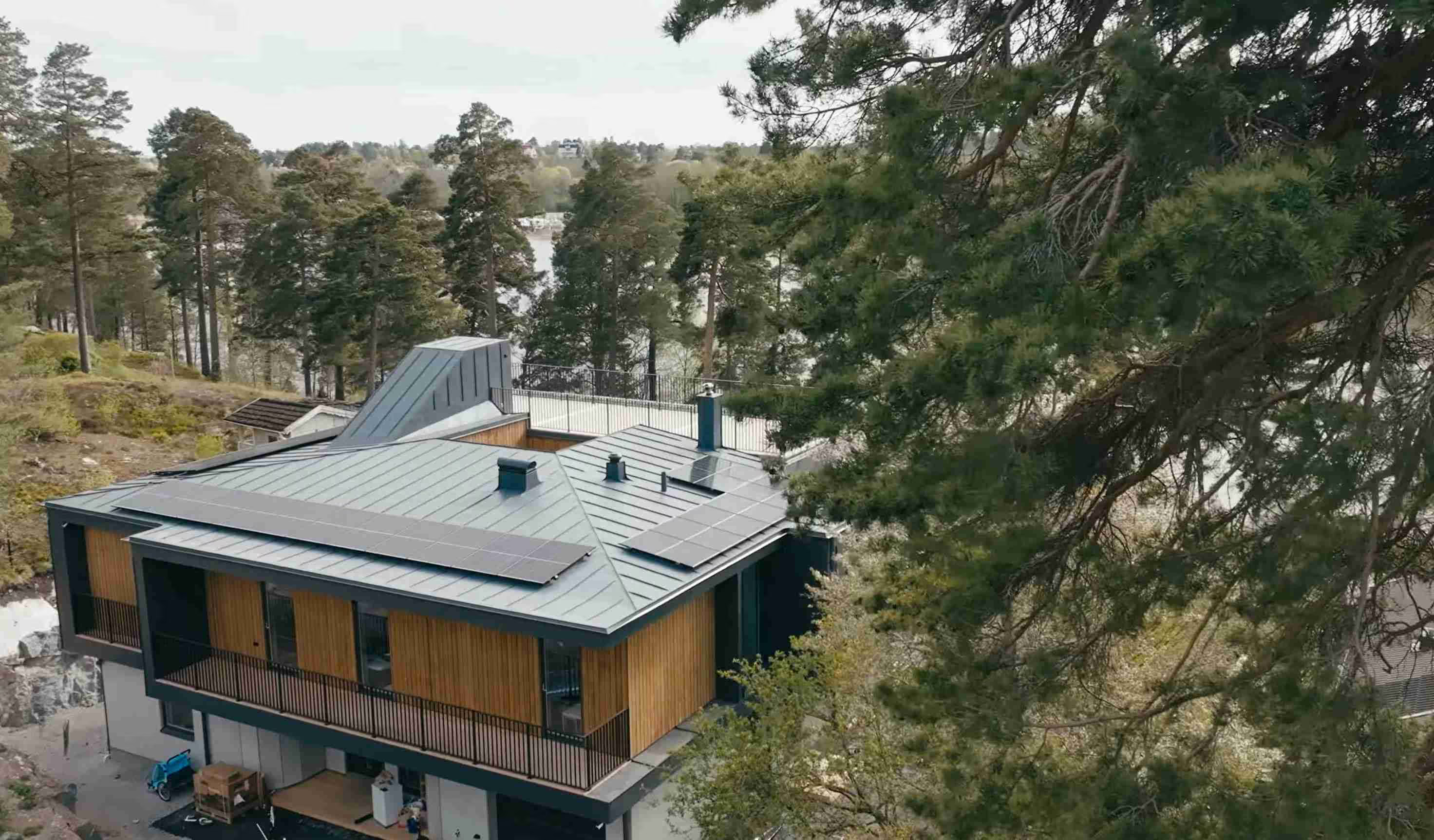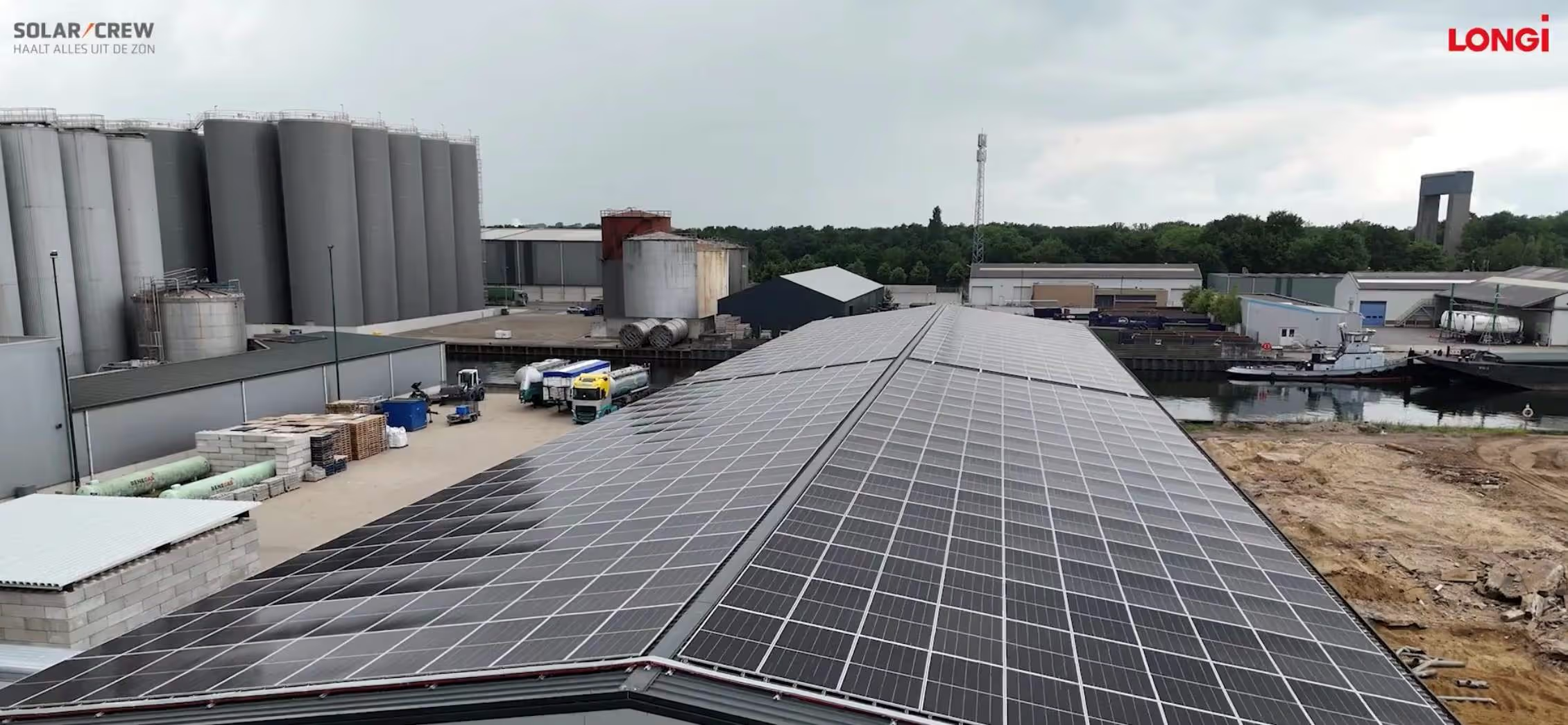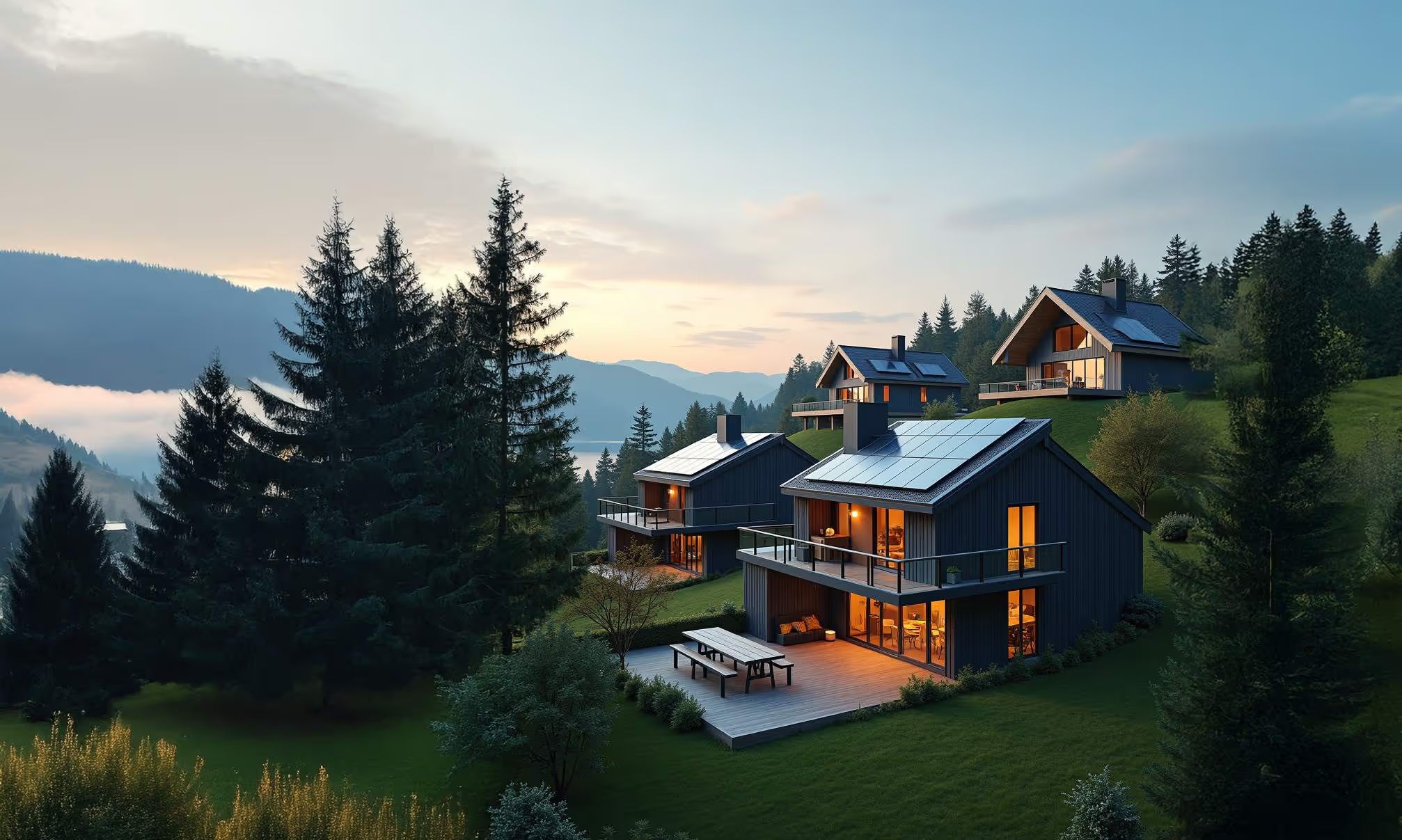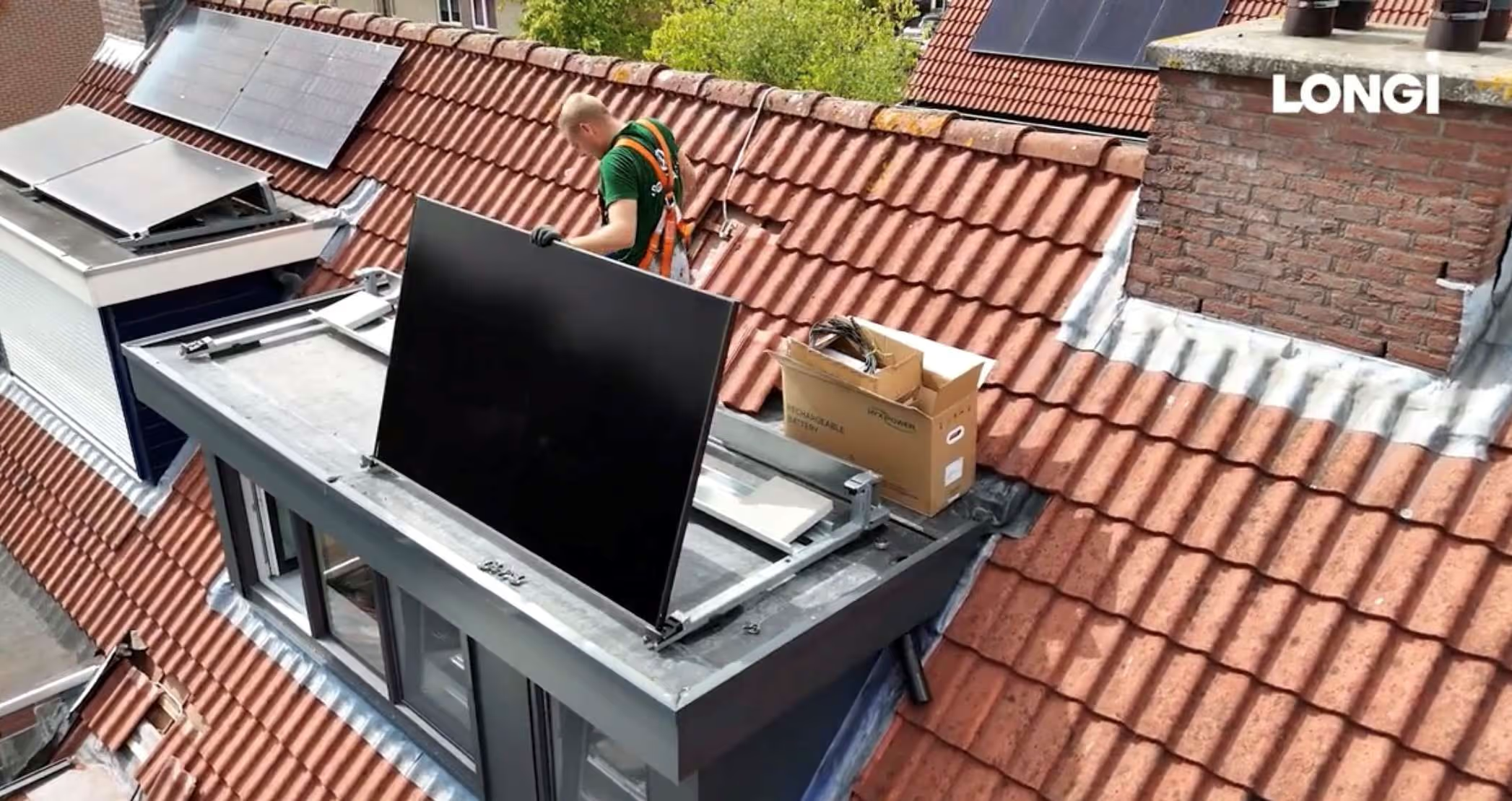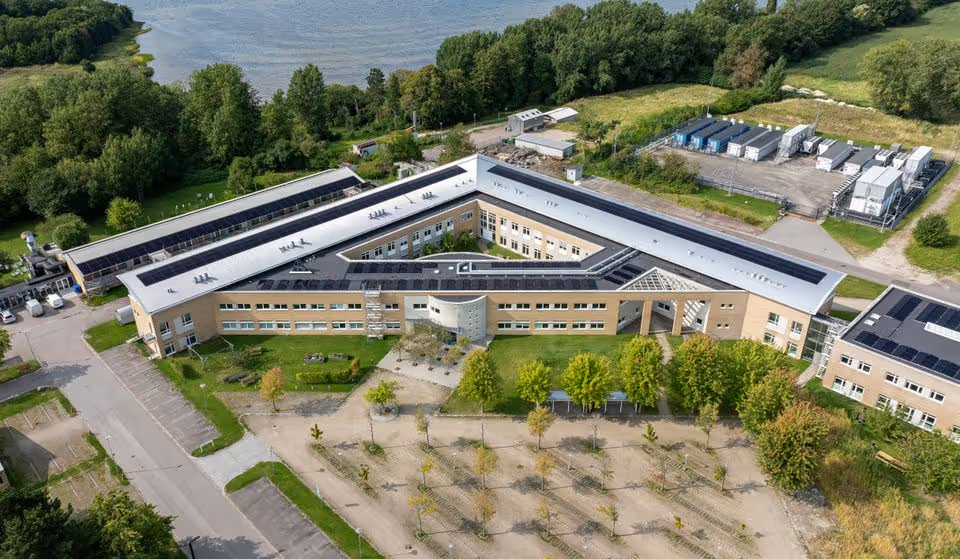In Hernán Pérez, a solar energy community breathes new life into Spain’s rural heartlands

Date
November 4, 2025
read time
5
Minutes
Subscribe to the LONGi Newsletter
In the heart of Extremadura, surrounded by olive groves and quiet hills, lies Hernán Pérez, a small village, 411 inhabitants, mirroring much of rural Spain’s story. It’s a sunny morning when Pau Borredá from LONGi Solar, walks through the calm streets, stone houses warmed by the first light, the air scented with olives and earth. On days like this, Hernán Pérez feels timeless, untouched by hurry. Yet beneath this quiet beauty, a new story is unfolding. It’s a story of sunlight, resilience, and a community that refuses to fade.
What began as a simple idea, to power the town’s olive oil cooperative with solar energy, has become a turning point for an entire village, a symbol of how innovation can take root even in the most remote corners of the “emptied Spain.”
Pau takes a seat among the people of Hernán Pérez. He wants to listen - to their stories, their memories, their quiet hopes. He wants to understand what binds them to this land. In a region often spoken of as part of the España vaciada (Empty Spain), where the population grows older and the young drift toward the cities, the voices that remain carry something rare: pride, warmth, and a deep sense of belonging. When asked what defines their home, they answer without hesitation - hospitality, unity, coexistence.
It is this feeling of togetherness that defines the village’s newest initiative - one that transforms sunlight into both, energy and hope.
Solar powers tradition through technology and brings new confidence to Hernán Pérez
At the center of the story stands the olive oil cooperative, the town’s beating heart and main employer. On its rooftop, a 100 kWp solar installation now gleams under the southern sky - built with LONGi’s latest back contact modules from the Hi-MO X10 Series. More than 150 panels, each delivering up to 650 watts of power, quietly turn sunlight into the energy that keeps Hernán Pérez running.
The installation was a carefully planned decision by the Town Council of Hernán Pérez, which secured funding from the Provincial Council of Cáceres. The program covered 85 percent of the total cost, making the project not only visionary but financially achievable for a small rural community.
The system now generates around 130,000 kWh of clean energy per year, offsetting much of the electricity used by public services, the olive cooperative and, most importantly, the residents of Hernán Pérez. The back contact cell design eliminates front-side busbars, reducing shading losses and preventing hot spots - an advantage especially relevant for industrial rooftops in southern climates.
“We wanted the best materials,” says Pablo Iglesias Ordoñez, the Town Council’s mayor, “because this is an investment for decades. It brings savings for the town hall, the cooperative, and ultimately for every resident.”
Antonio Esperilla González from the installing Emececuadrado Group explained the decision behind the back contact technology choice: “At Emececuadrado Group, we have always chosen pioneering and highly reputed brands, such as LONGi in this case. Its back contact technology prevents shading and related issues. At the cell level, this design helps us avoid hot spots because the current moves more efficiently between cells, which significantly increases energy production.”
Solar energy turns into a community project, linking education, culture, and sustainable progress in the village
The solar installation has quickly become part of the village’s identity. At the Forest School’s camp hostel, local children talk about renewable energy and the environment as concepts that no longer feel abstract but visible right outside their windows. “They understand that the sun is there, it must be used,” says Willy, the Camp’s director.
At the interpretation centre, housed in a restored olive oil mill, cultural events and local tourism highlight how tradition and innovation coexist. The village wants people to see what the region stands for: its history with olive oil, but also how it is preparing for the future.
The councilor for social services, Marta, calls the project “a success,” not just because it reduces electricity bills, but because it reminds residents that progress is still possible here.
A spark in the “Empty Spain” and engine of local resilience
Rural depopulation remains one of Spain’s defining challenges. According to Fundación “la Caixa,” almost half of Spanish municipalities have fewer than 1,000 inhabitants, and many face a “demographic desertification” where the population density drops below 8 inhabitants per km². In regions like Extremadura, this pattern is especially visible: shrinking schools, fewer jobs, declining public investment.
Yet projects like the one in Hernán Pérez show that the story does not have to end in decline. Renewable energy offers a practical path toward local resilience: lowering costs, creating technical jobs, and making villages more attractive to both residents and visitors.
The solar array on the cooperative’s roof might look modest compared to urban megaprojects, but its meaning runs deep. It demonstrates that even small communities can play an active role in Spain’s energy transition.
It also points to the potential of energy communities, collective models where residents, cooperatives, and municipalities share solar generation. In villages like Hernán Pérez, where the electrical load already exists through local production, such projects could distribute benefits even further, perhaps even encouraging young families and entrepreneurs to return.
As visitors sip olive oil at the tasting counter or children play near the forest school, solar energy has become a quiet symbol of possibility.
Energy communities driven by solar are emerging as the backbone of rural regions
For Pau Borredá, the connection to the village and its people runs deeper than technical planning or execution. “It’s not easy to leave a place like this,” he says. “Because what remains is not just a photovoltaic installation, but the certainty that we’ve helped this town look toward the future.”
In Hernán Pérez, the story of solar energy is also a story of community, of people who refuse to give up on the land that raised them. From the glow of modern modules to the shimmer of olive leaves, sunlight now powers not just machines, but continuity, pride, and the belief that rural Spain still has a bright horizon.
And perhaps, as small villages across Europe face similar challenges of depopulation and renewal, Hernán Pérez can stand as an example, showing how local energy community projects can restore confidence, strengthen communities, and illuminate a sustainable path forward.
See Hernanz Perez' story in full here:


